Son of teachers, Léopold Lelée studied classical arts at the Lycée de Laval, where he notably took classes from Professor Gaston Bertin, and also from Emile Sinoir.
In 1890, he came first in the general drawing competition of the Société des arts réunis de Laval, and was awarded a scholarship by the General Council of Mayenne.
He entered the École nationale supérieure des arts décoratifs in the upper class, became a student of Edmond Lechevallier-Chevignard, then the École nationale supérieure des beaux-arts de Paris thanks to a scholarship from the General Council of Mayenne. He never went out without his notebook and pencil; at the restaurant, at the theater, everything was for him an object of discoveries and original notations. His work is therefore immense and varied2.
He frequented Adrien Bruneau at the Arts décoratifs. Lelée having worked a lot on costume and illustration, he was asked to create the Perrine Museum-School in Laval and donated drawings and posters to the City of Laval. According to Jules Belleudy who dedicated a small book to him in 1913, his following experiences did not satisfy him.
A teacher in Saint-Quentin, then in Roubaix ("Sometimes he forgets the time, distracted by the entrance and exit of the workshops or the spectacle of the street. He draws silhouettes of beggars"), the climate depressed him. "the landscape is desperately monotonous, the diffuse light has no effect4". After two years, he left for Paris and tried to make a living by illustrating various media.
In contact with the Paris workshops, he discovered Art Nouveau, whose style he adopted in his posters, his postcards, his decorations, his drawings with stylized arabesques, plants or humans. To his credit, he has created, among other things, more than 3,000 postcards, one of which was selected in the Collection of the Hundred, entitled The Pig Manege, bringing together the masters in postcards. He is a watercolorist, poster artist, and illustrator of school books. Jules Belleudy recounts that upon his return to Paris, a friend spoke to him about Provence with an accent that convinced him. At the age of thirty, he packed his bags again, this time for good.
Attracted by the light dear to Vincent van Gogh and by the biblical aspect of Provence, from the Alpilles to the sea, he settled in the Arles region where he found his balance. The Provençal light and the love of an Arlesian woman would keep him. "In a few years, our artist put all of Arles in his albums, having meditated on the work to be accomplished and which consists of fixing by color the costume that tends to disappear and the customs that we tend to abandon". But this success does not come immediately, far from it. He struggles to feed his family.
He then leaves his shop and settles in an 18th century hotel where he exhibits his watercolors. He is interested in visitors, explaining his art to them on request, and sometimes giving them unusual advice. Jules Belleudy reports that when a potential client had chosen a painting, he sometimes advised him not to buy it with this argument: "I am not completely satisfied, look better...". He then settled in Fontvieille, where Alphonse Daudet's mill is located, and we find him thanks to the testimony of Colonel Dechaux who visited him in 1936. "Mr. Léo Lelée is a man who, despite the hardships he has endured during his life, is cheerfully and cheerfully living his sixties." Vice-president of the Society of Friends of Alphonse Daudet's Mills, he is introduced by Jules Chancel in one of the magazines published by this society: "He is a very curious character, this lively little fellow, with eyes sparkling with mischief and gaiety behind his glasses, whom everyone here loves for ten leagues around. I name Lelée, the painter of the Arlésiennes […] If you talk to him about the crisis in painting, he bursts out laughing." "But," replies Lelée, "I have never sold so many!... It is true that I pay my tax collector and my butcher with a watercolor, like my baker, by painting them a portrait of their daughters." "And," concludes Chancel, "he does everything, this devil of a painter and, on the posters, the programs, the wallpapers and the paperweights, we find these beautiful stylized Arlesiennes which are his specialty." The illustrations made for the book Le Costume en Provence by Jules Charles-Roux contribute to his reputation which is affirmed in his collaboration with other authors, French or foreign, of the most beautiful works of art of the time. A friend of Frédéric Mistral, he left us an ode to Provence. Having retired to his small house overlooking the arenas of Arles, he died in 1947, following a long illness. Many testimonies emphasize the humor of the character, his sense of repartee and his modesty.
His works are essentially preserved in three places: "the Arlaten Museum (more than 500 works), the Palais du Roure in Avignon and the Perrine Museum in Laval.























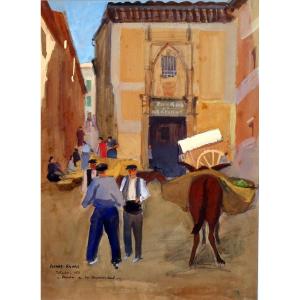
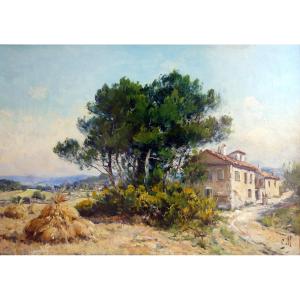




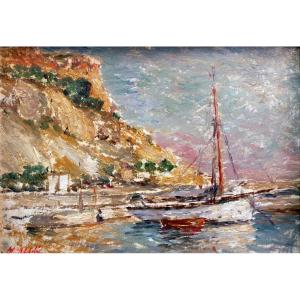

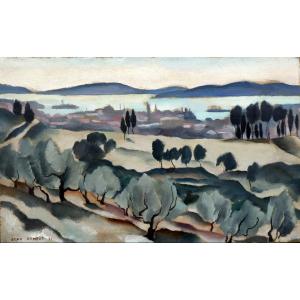

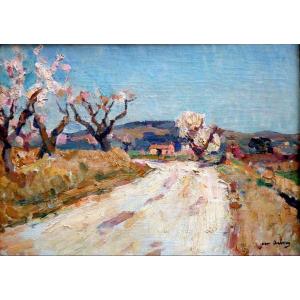
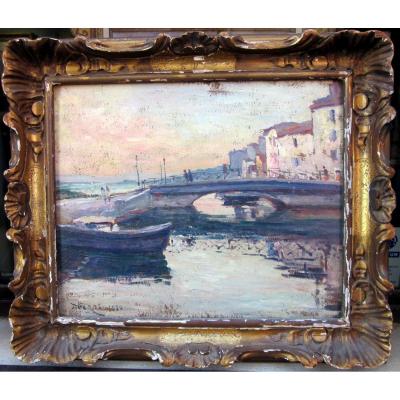
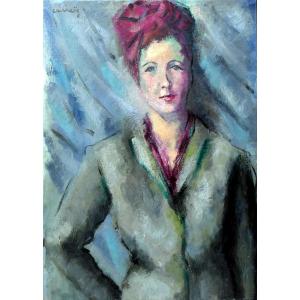

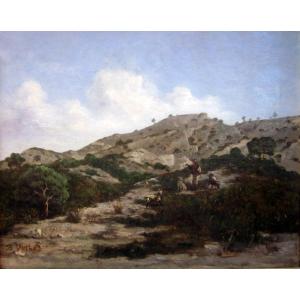

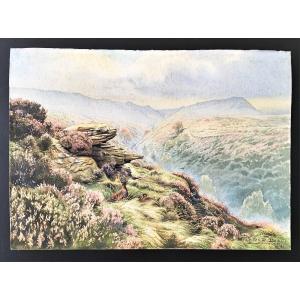


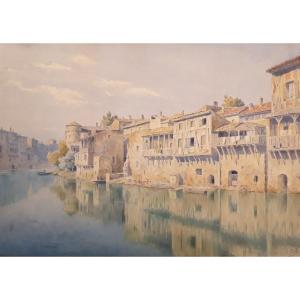



 Le Magazine de PROANTIC
Le Magazine de PROANTIC TRÉSORS Magazine
TRÉSORS Magazine Rivista Artiquariato
Rivista Artiquariato